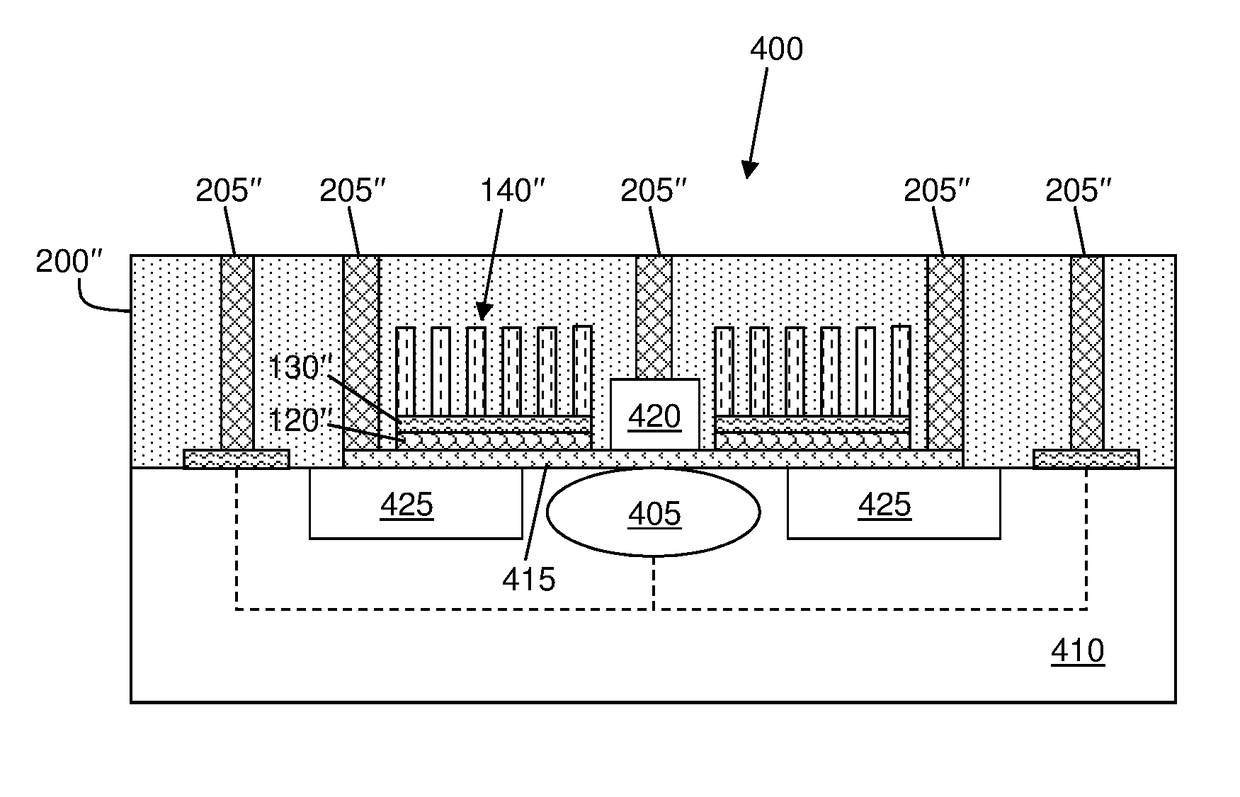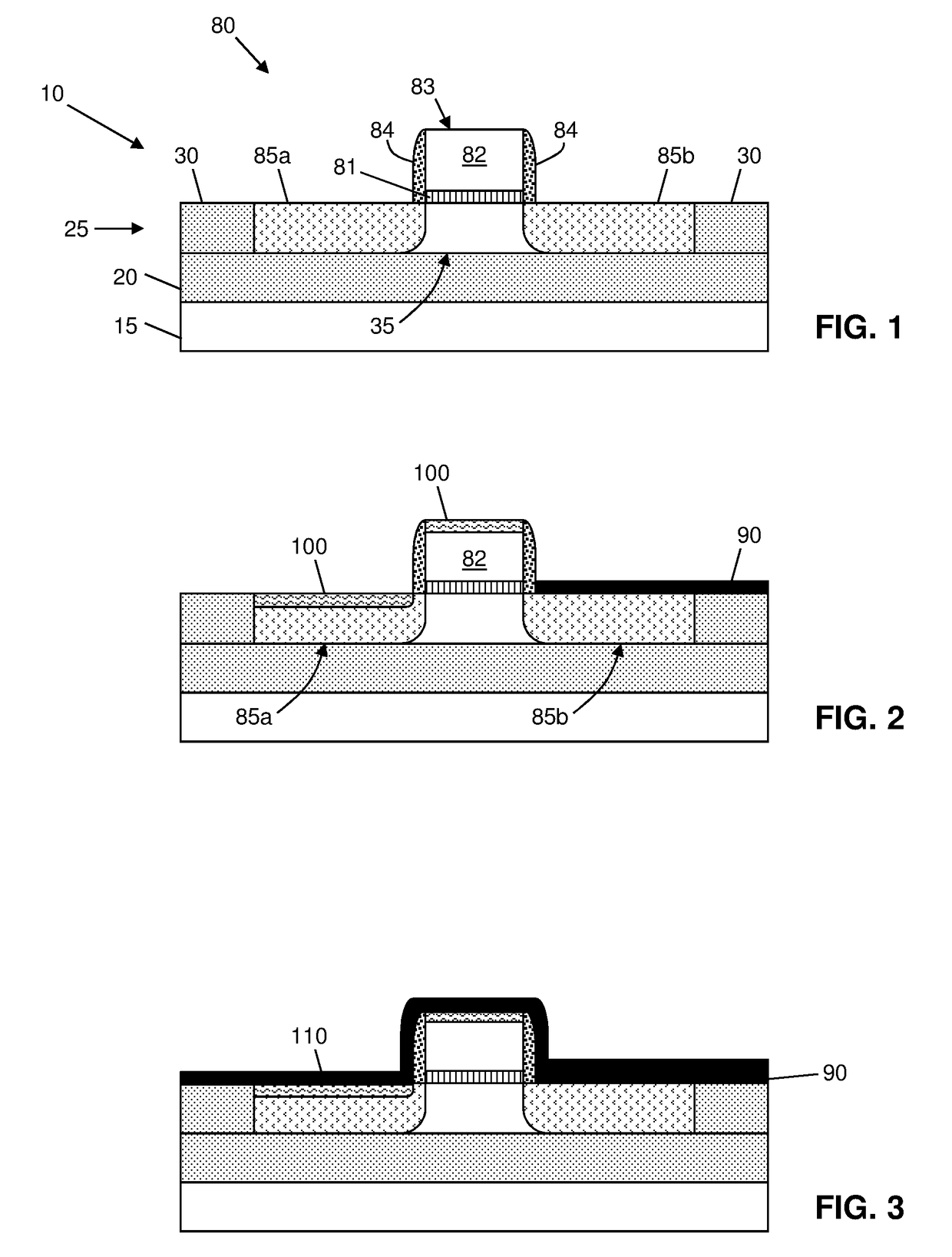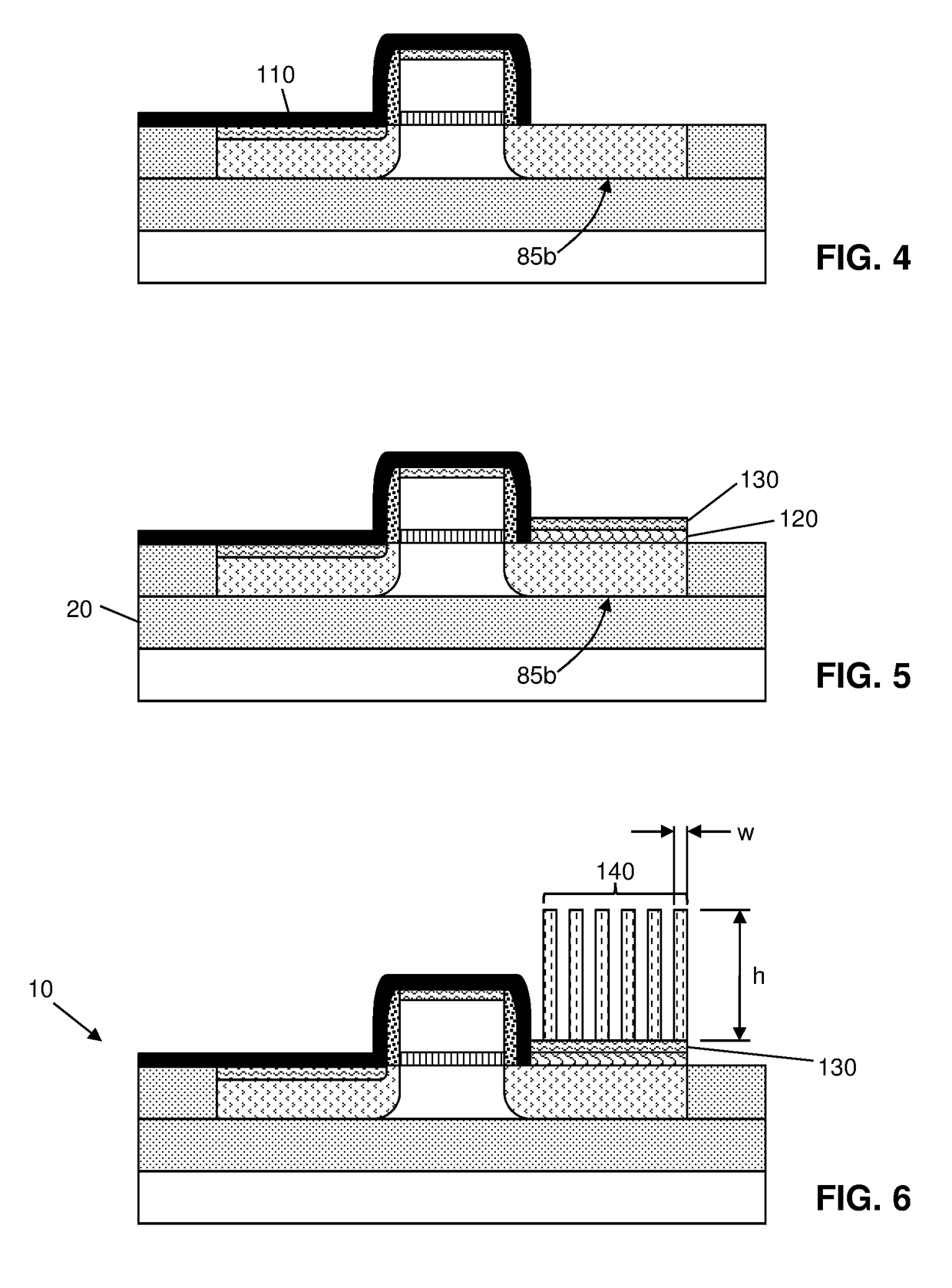Integrated circuit heat dissipation using nanostructures
a technology of integrated circuits and nanostructures, applied in the direction of semiconductor devices, semiconductor/solid-state device details, electrical devices, etc., can solve the problems of reducing the performance and/or useful life of the device, limiting the operation of the device, and severely limited switch performance, etc., to achieve high thermal conductivity
- Summary
- Abstract
- Description
- Claims
- Application Information
AI Technical Summary
Benefits of technology
Problems solved by technology
Method used
Image
Examples
Embodiment Construction
[0013]The invention relates to integrated circuits and, more particularly, to methods and systems for dissipating heat in integrated circuit devices. According to aspects of the invention, nanowire structures are formed to produce an electrically isolated but thermally conductive path for heat to diffuse away from a device. By placing nanowires on and near devices, the nanowires provide a path for heat dissipation and / or heat transport from a source to a sink, and drastically cool the device, which improves device performance. In embodiments, the nanowires comprise zinc oxide (ZnO), which provides the benefit that the nanowires are easily formed with high selectivity via an electrochemical hydrothermal bath. In addition, ZnO has a high thermal conductivity and is a cost-effective, environmentally friendly, and readily available material. Including these nanowire heat fins in devices as described herein provides for further optimization of devices, such as reducing the number of cont...
PUM
 Login to View More
Login to View More Abstract
Description
Claims
Application Information
 Login to View More
Login to View More - R&D
- Intellectual Property
- Life Sciences
- Materials
- Tech Scout
- Unparalleled Data Quality
- Higher Quality Content
- 60% Fewer Hallucinations
Browse by: Latest US Patents, China's latest patents, Technical Efficacy Thesaurus, Application Domain, Technology Topic, Popular Technical Reports.
© 2025 PatSnap. All rights reserved.Legal|Privacy policy|Modern Slavery Act Transparency Statement|Sitemap|About US| Contact US: help@patsnap.com



